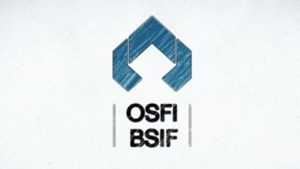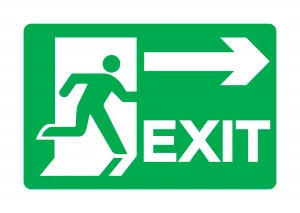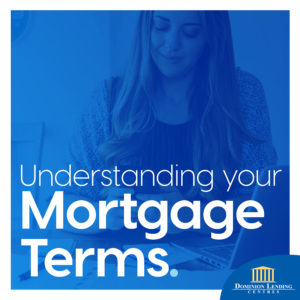Mortgage Hacks

Simple hacks to getting a mortgage application approved
In Canada, all mortgage applications with a financial institution are subject to the B-20 stress test. This means that the borrowers need to qualify at the higher of the contract rate plus 2 percent or the Bank of Canada rate (currently 5.25%). Qualifying refers to meeting 2 ratios. The first is gross debt serving (GDS), also known as PITH (Principal, Interest, Taxes and Heat). For most borrowers, GDS can not be greater than 39%. The second is total debt servicing (TDS). This refers to PITH, car payments, 3% of credit card balances and 1% of student loans. TDS cannot be greater than 44%.
This is why as a mortgage broker, one of the first things I do is pull a credit bureau. This helps qualify a borrower ahead of shopping for a home or investment property. These tests are stringent and not everyone can clear this bar. Fortunately, there are some hacks that can help borrowers satisfy these tests. As part of my initial call with borrowers, I explain some potential mortgage hacks to help them maximize their borrowing potential.
Mortgage Hack #1: Increase Income
The most common way to increase income is to add more borrowers to the file. For example, parents often agree to help out their adult children by co-signing for the mortgage. This means that the co-signers go on title. There are two downsides to this hack. Firstly, the co-signer(s) are limited in their future borrowing as the PITH from this new property needs to be taken into account for their total debt servicing. Secondly, there can be capital gains implications. As such please consult a tax planner or lawyer.
ATnother way to increase income is to use the Canada Child Benefit (CCB). Most lenders will consider using 100% of the CCB for children that are aged 13 or under. Lenders won’t consider using the CCB for most teenagers, as the benefit ends at age 18 and the lenders want to guarantee the income for the term of the mortgage.
Mortgage Hack #2 Increase Down Payment
If borrowers are able to save more than 20% of their down payment, then 3 factors come into play. Firstly, they no longer have to pay for mortgage default insurance. The lender pays for this. As a result, the interest rate is nominally higher, but the payments are lower. Secondly, they can opt for a longer amortization period. This means 30 years to repay the mortgage instead of 25. Again, this incurs a higher interest rate, but the payments are lower. Finally, I work with some lenders that ignore GDS altogether, and consider only TDS when the down payment is 20% or more. This works best for clients without car payments or additional debt.
Mortgage Hack #2B Increase Down Payment with Government Equity.
Through the first time home buyer’s incentive(FTHBI), buyers can qualify for an additional 5% towards their down payment. This has the effect of reducing the mortgage default insurance premium and the principal. As a result, buyers can qualify for slightly larger purchases. However, this program comes with several downsides. Firstly, it is narrowly targeted, which makes it difficult to qualify for. Secondly, the government owns a 5% equity stake of the home. For example, if the original amount of the FTHBI was $10,000 and the house doubles in price, the homeowner(s) will need to repay $20,000. Thirdly, the government registers a second mortgage against the house for the amount of the equity stake. This means that the homeowner(s) can not qualify for a line of credit without first clearing this second mortgage.
The net result result is that this is not a hack that I recommend unless the borrower(s) know that they are coming into some funds to repay it in a 6-12 month time frame.
Mortgage Hack #3 Reduce Mortgage Payment
In addition to Hack #2, another way to increase borrowing power is to locate a property with a rental suite. (The rental suite needs a separate entrance, separate kitchen and separate bathroom). There are two ways that lenders treat rental income. Most lenders take 50% of the rent and add it to income. However, I have one lender that uses 100% of rental income as an offset. This means that if the clients can locate a property with a rental suite, the PITH is offset (reduced) by the amount of the rent. For example, if a property had a mortgage payment of $3000 per month, and a rental suite rented for $1200 a month, the borrower(s) would only need to qualify on a payment of $1800 per month. These properties are hard to find and not everyone is willing to become a landlord.
Mortgage Hack #4: Reduce or Pay off Debts.
Many clients can qualify for a mortgage on the basis of GDS, but they have other debts that can throw the TDS out of whack. If they have significant savings and are able to, it can in some cases make sense to reduce the down payment and pay off some (or all) of the debt. Alternatively I work with a service that can stretch out the amortization of car loans, so that the payments are reduced. Both of these can help clients get the TDS inline and help qualify for a larger amount.
A Tailored Approach.
Not every one of these mortgage hacks is right for every situation. I can only recommend the best solution after an in depth conversation. Please feel free to reach out to me at 249-353-3278 to see if any of these hacks might help you qualify for the home you’re hoping for.






 A woman called me on the verge of tears on Saturday morning as she was at risk of losing the family home. She and her husband as well as her daughter and son-in-law had purchased a home in February of 2022. In retrospect, we now call this time peak frenzy. However, they did not know it at the time. They paid just under $1M for a beautiful home. The clients put down 16% from the proceeds of a previous sale as their down payment. They lacked an exit strategy from their private mortgage. They were on the verge of losing their original downpayment.
A woman called me on the verge of tears on Saturday morning as she was at risk of losing the family home. She and her husband as well as her daughter and son-in-law had purchased a home in February of 2022. In retrospect, we now call this time peak frenzy. However, they did not know it at the time. They paid just under $1M for a beautiful home. The clients put down 16% from the proceeds of a previous sale as their down payment. They lacked an exit strategy from their private mortgage. They were on the verge of losing their original downpayment.

